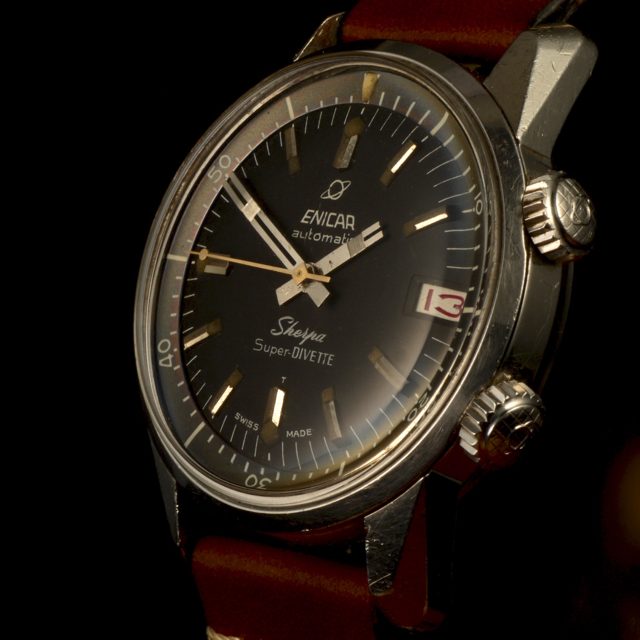
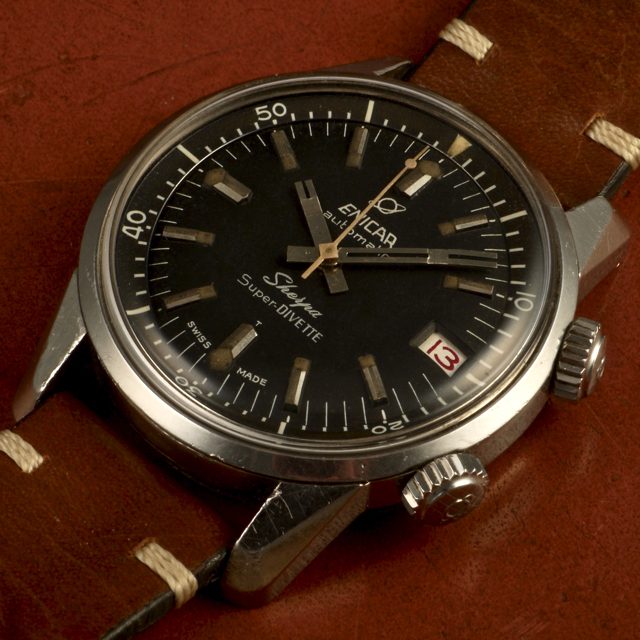
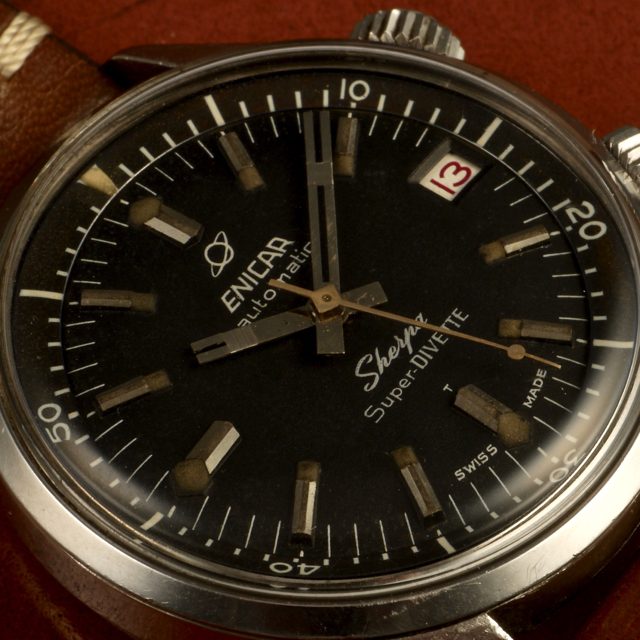
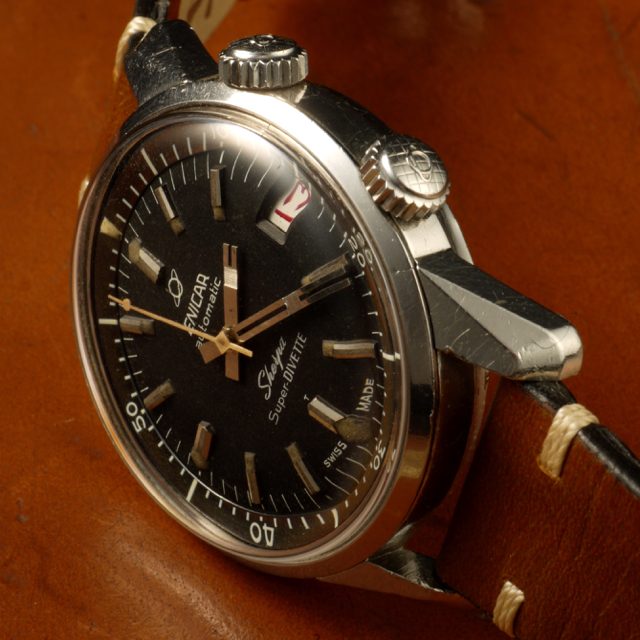
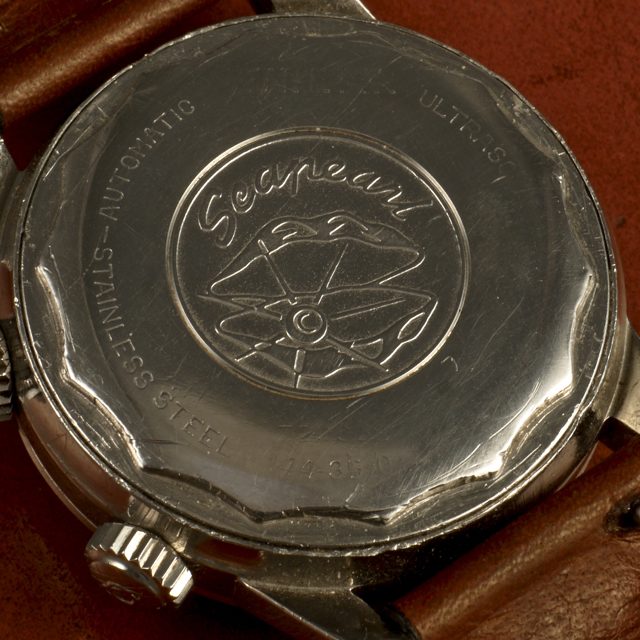
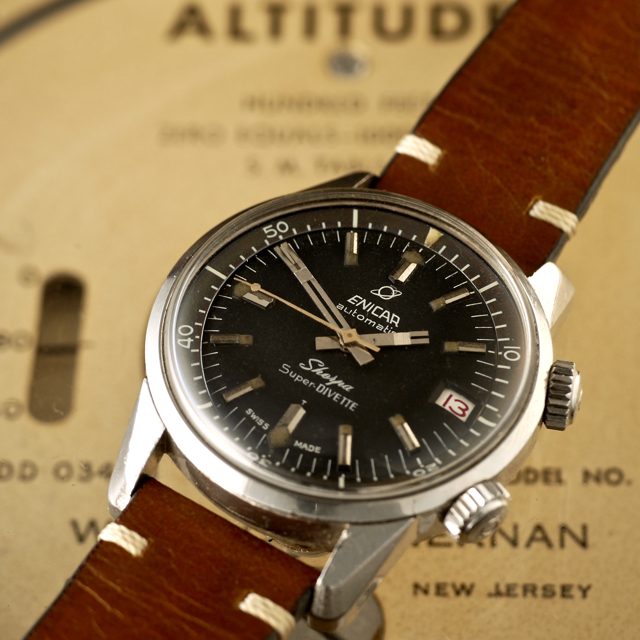
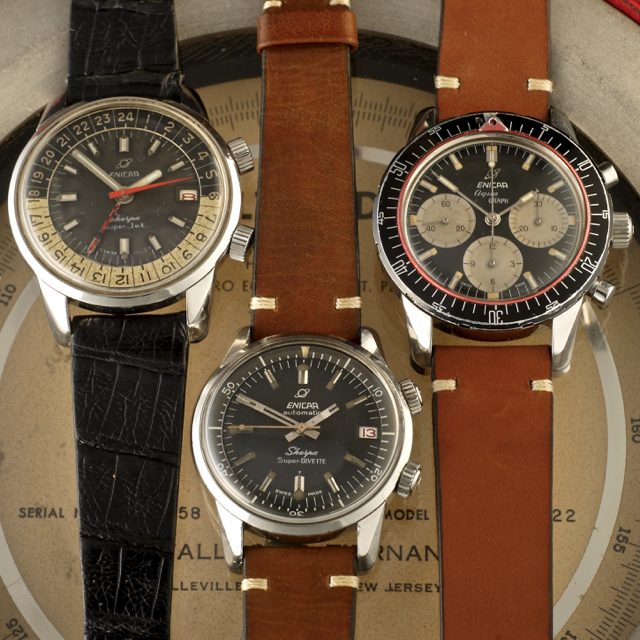
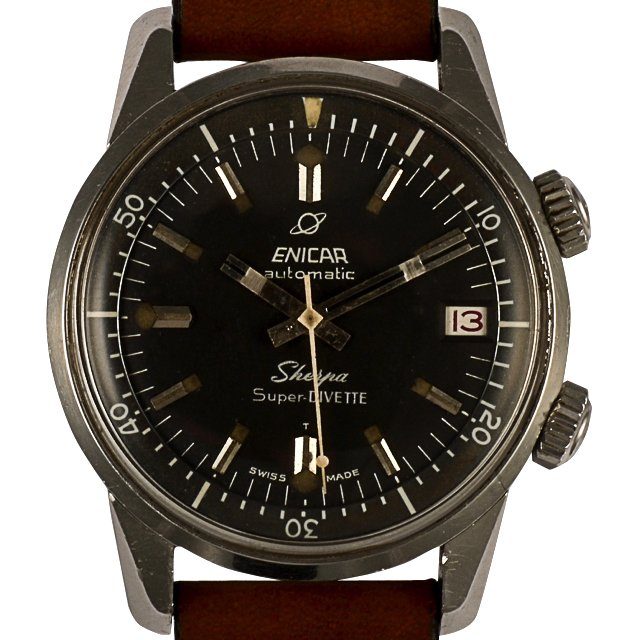
Enicar Sherpa Super Divette
The first US combat troops arrive in Vietnam. By the end of the year, 190,000 American soldiers are in Vietnam1965 Enicar Sherpa Super Divette 144-35-01 cal. 1145B
The model, Super Divette T, meaning that the lumes has used Tritium. Lumes used Tritium from the 1960s until the late 1990s. Like radium, which it replaced in 1960, it is also radio-active. The half-life is approximately 12.3 years and after that, Tritium (in most cases) will not glow anymore.
Their spring-loaded case backs makes the Enicar Sherpa Super Divette Super Compressor cases notable, which actually tighten when exposed to higher pressures underwater.
The Enicar Sherpa Super Divette dual crowns at 2 and 4 o’clock (one to set the time and the other to control the inner diver’s rotating bezel) feature a distinctive cross-hatch finishing, over which many brands placed their logo.
Along with the typical cross-hatch finishing on the crown. The case backs of Super Compressor divers often bore EPSA’s dive helmet logo. Besides the unique Super Compressor case among the dive watches of the period, Enicar, certainly excelled at modifying and improving their Super Dives.
They produced Super Dives in both the 36 and the 41mm case sizes, and even produced GMT divers. While the Super Dive lacks such dive watch necessities as screw-down crowns. The Enicar Sherpa Super Divette case nevertheless equipped it for depths of over 600 feet.
The Enicar Super Dive’s polygonal-shaped unique case back fits together with a bayonet attachment system, ensuring stripped or crossed threads. This quirky, yet efficient caseback design sets Enicar’s Super Compressor diver watches apart from the others, making it an excellent and sought-after vintage diver.
Enicar is a brand that has only recently begun to gain traction among the collecting community, and yet its horological roots run deep. The Racine family (themselves cousins of the Gallet watchmaking dynasty) was already well-known in the watchmaking hub of Juraas early as the 1700s. In 1870 Jules Racine Sr manufactured pocket watches under the family name.
By the time young Ariste Racine entered the family business and wanted to start his own brand. The name “Racine” , already trademarked. So his wife, Emma, devised a clever solution: reverse the family name to “Enicar.” Thus, in 1914 they established Enicar S.A. in that horological hotbed of La-Chaux-du-Fonds. Ariste Racine, with the help of his brother Oskar, grew the company steadily in the 20th century. They received a wide acclaim for their robust pocket watches that became favorites among officers in WWI.
By the 1930s, Enicar started producing wristwatches, and set its sights on building watches to wear in any environment. After World War II, production expanded and improved under the helm of Ariste Racine, Jr.By the early 1950s. They produced 70,000 movements each year in their laboratory, ultrasound technology had cleaned movements which Enicar boasted, establishing the “Ultrasonic” line of watches. In 1954 their Caliber 1010 achieved chronometer certification. Also, as Rolex did with the Explorer, Enicar turned its gaze to the highest peaks of the world.
Drawing from the needs of mountaineers and explorers, Enicar launched their Sherpa line, developing various sports models through the 1960s. Enicar’s Seapearl watches strapped to the wrists of the members of a Swiss expedition to the summit of Mt. Everest in 1956. Taking the name from the rugged, heroic Sherpa guides who escorted (and in many instances carried) European explorers to the summit, Enicar renamed their Seapearl line to Sherpa.
1958 saw the launch of the Sherpa dive watches. Enicar adopted the Super Compressor case design manufactured by Ervin Piquerez S.A. (EPSA) from the 1950s to the 1970s.
During the 1960s, they released over 100 different models of Sherpa, for every conceivable sport.
What separates Enicar from other brands lost to time is that they were incredibly popular in Asia, specifically China and Russia, due to their relative low cost and high quality compared to domestic made timepieces of the time.
Unfortunately the end of Enicar came much like that of Universal Geneve. Enicar did manage to put up a good fight during the quartz crisis. As they were already at a lower and more competitive price point, however they were by no means immune. Enicar were in fact among the first watch brands to make use of the Beta 21 movement that the Swiss hoped to combat the influx of cheap Japanese quartz however it was a losing battle.
In 1987 Enicar filed for bankruptcy and piece by piece the Enicar name dismantled. The remaining watch cases sold to the owner of ChronoSwiss.
The brand name put up for auction and bought by a Hong Kong investment company.
